When children are learning to read, they learn all about phonics. However, what happens when they reach certain words that the rules of phonics don’t actually apply to? What about the words that appear in our sentences on a regular basis?
Should they have to sound out “the” every time they come across it in a sentence? No! For the first few years of school, kids should be learning sight words.
This article contains worksheets and flashcards for the first 100 Dolch Sight Words! Enjoy!

So, who is Dolch and why did he decide what the 220 sight words should be?
The Dolch Word List is a list of frequently used English words compiled by Edward William Dolch, PhD, a major proponent of the “whole-word” method of beginning reading instruction. The list was prepared in 1936. The list was originally published in his book Problems in Reading in 1948.
Dolch compiled the list based on children’s books of his era, which is why nouns such as “kitty” and “Santa Claus” appear on the list instead of more high-frequency words. The list contains 220 “service words” that have to be easily recognized in order to achieve reading fluency in the English language. The compilation excludes nouns, which comprise a separate 95-word list. Between 50-75% of all words used in schoolbooks, library books, newspapers, and magazines are a part of the Dolch basic sight word vocabulary.
Why are sight words important?
Sight words are an important component of language, specifically for developing readers. High-frequency words such as ‘the,’ ‘a’, and ‘in’ form the basis of writing.
Understanding these words is crucial for decoding unfamiliar material and building independent reading skills.
For example, spotting common sight words not only helps students understand a text in its entirety but also properly identifies the function of unknown vocabulary within context.
Moreover, speed in recognizing sight words reduces both physical and mental strain that can otherwise fester when trying to decipher each word one by one.
Being skilled in sight words allows developing readers to grasp sentence meaning quickly and move on to more complex elements easily.
What are the most common sight words to learn?
Sight words are an essential part of a child’s journey towards reading fluency, and understanding the most common sight words is essential for students to grow in their literacy abilities.
The most commonly seen sight words include everyday words such as ‘the,’ ‘of,’ ‘and,’ and ‘said.’ These frequently appear in the text, and learners need to be able to recognize them without having to sound out each letter manually.
Additionally, other essential sight words include numerals, colors, and shapes.
Mastering these terms allows young readers to navigate even unfamiliar texts confidently.
Building familiarity with basic sight words will make reading easier for learners as they embark on their educational journey.

Does learning sight words help with reading skills?
Sight words are an essential building block for language and literacy development in young children.
Learning sight words is a powerful tool to help children become stronger readers. By learning sight words, children can quickly recognize common words without having to decode them phonetically or depend on memorizing the spelling of long, multi-syllable words.
Research has consistently shown that recognizing sight words is important for the early stages of reading fluency, comprehension, and accuracy.
Additionally, mastery of these high-frequency words helps boost reading speed and confidence as one progresses through higher levels of reading complexity.
Consequently, instruction in basic sight word recognition can be a powerful tool to help achieve success in early reading skills.
How Do Dinosaurs Go to School?How Do Dinosaurs Collection. 6 Books (HowHow Do Dinosaurs Count to Ten?How Do Dinosaurs Play with Their Friends?How Do Dinosaurs Get Well Soon?How Do Dinosaurs Learn to Read?
At what age should kids start working on sight word learning?
The optimal age for kids to start learning sight words varies depending on the individual learner and their educational background.
Generally, research indicates that once children have established a good foundation in phonics and reading comprehension skills, it can be beneficial for them to begin learning sight words.
For example, it has been found that when kindergarten students are given exposure to high-frequency sight words early on during their academic careers, they exhibit fewer errors when attempting to read the grade-level text in later years.
Thus, recognizing the importance of sight word exposure in allowing students to progress with their reading ability is key when determining at what age kids should start working on these types of activities.
Shop My Alphabet Printables
Here are some other great learning resources that are in my shop. More alphabet learning fun!
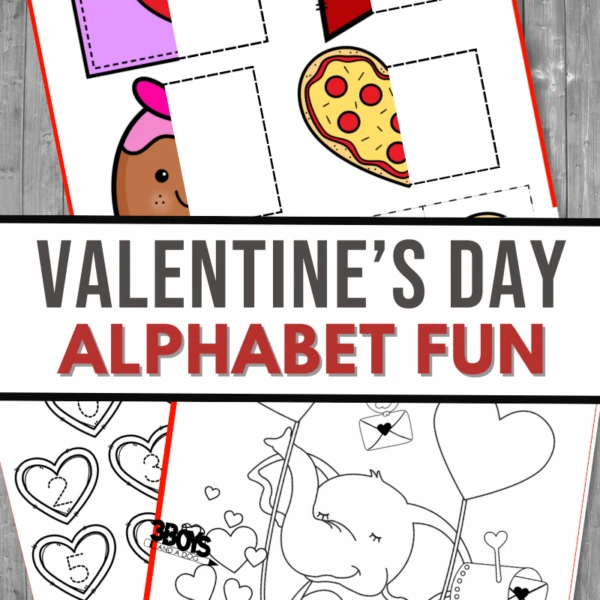
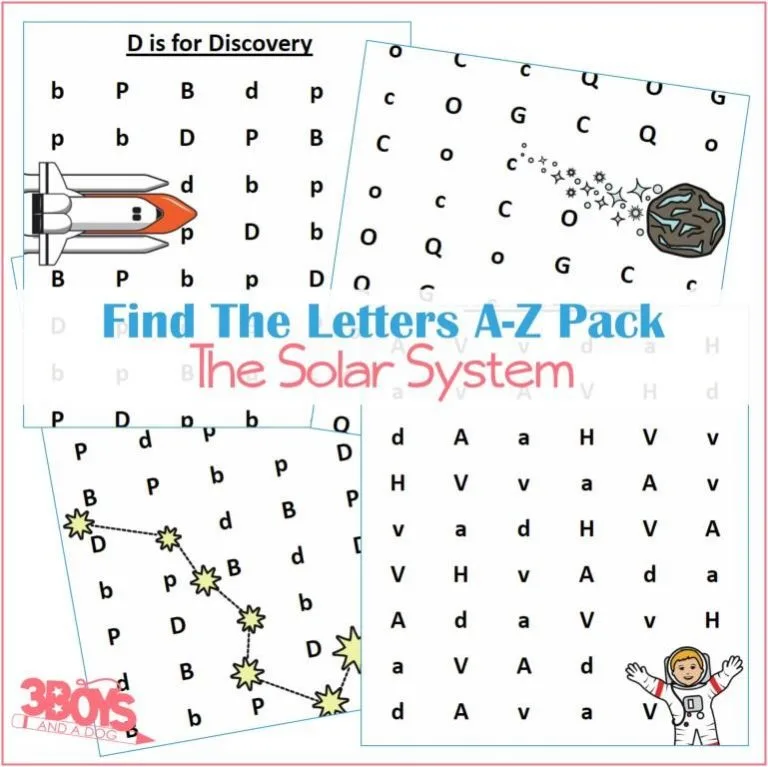

First 100 Dolch Sight Words:
For the past 10 weeks, I have been making printable worksheets and flash cards to help you teach and reinforce the Dolch Sight Words to your little ones. Some of you have asked, so here is the full list of the first 100!
- Words 1-10 – a, and, away, big, can, come, down, find, for, funny
- Words 11-20 – go, help, here, I, in, is, it, jump, little, look
- Words 21-30 – make, me, my, not, one, play, run, said, see, the
- Words 31-40 – blue, red, three, to, two, up we, where, yellow, you
- Words 41-50 – all, am, are, at, ate, be, black, brown, but, came
- Words 51-60 – did, do, eat, for, get, good, have, he, into, like
- Words 61-70 – must, new, no, now, on, our, out, please, pretty, ran
- Words 71-80 – ride, saw, say, she, so, soon, that, there, they, this
- Words 81-90 – too, under, want, was, well, went, what, white, who, will
- Words 91-100 – with, yes, after, again, an, any, as, ask, by, could
Dolch Sight Word Games & Books:
Here are a few of my top picks to help you reinforce the sight words to your kids!
- Learning Resources Pop For Sight Words Game
- Meet the Sight Words Easy Reader Books (set of 12 books)
- Zingo Sight Words
- Sight Words Games & Flash Cards vol 1: Kids Learn to Read
- 15+ Sight Word Games for Kids
How will this Dolch Sight Words list help young kids learn how to read?
Having a list of words like this is perfect for basic sight vocabulary. Lists of sight words help with sound-spelling patterns as well as new sight words. These can be great for classroom use or an early grade level with homeschool learning.
Once the kids start to understand how Dolch words work, they’ll think of fun ways that they can start using these Dolch word lists! Young students will gain confidence with this free resource because lists of sight words will give them the knowledge on how to start reading!
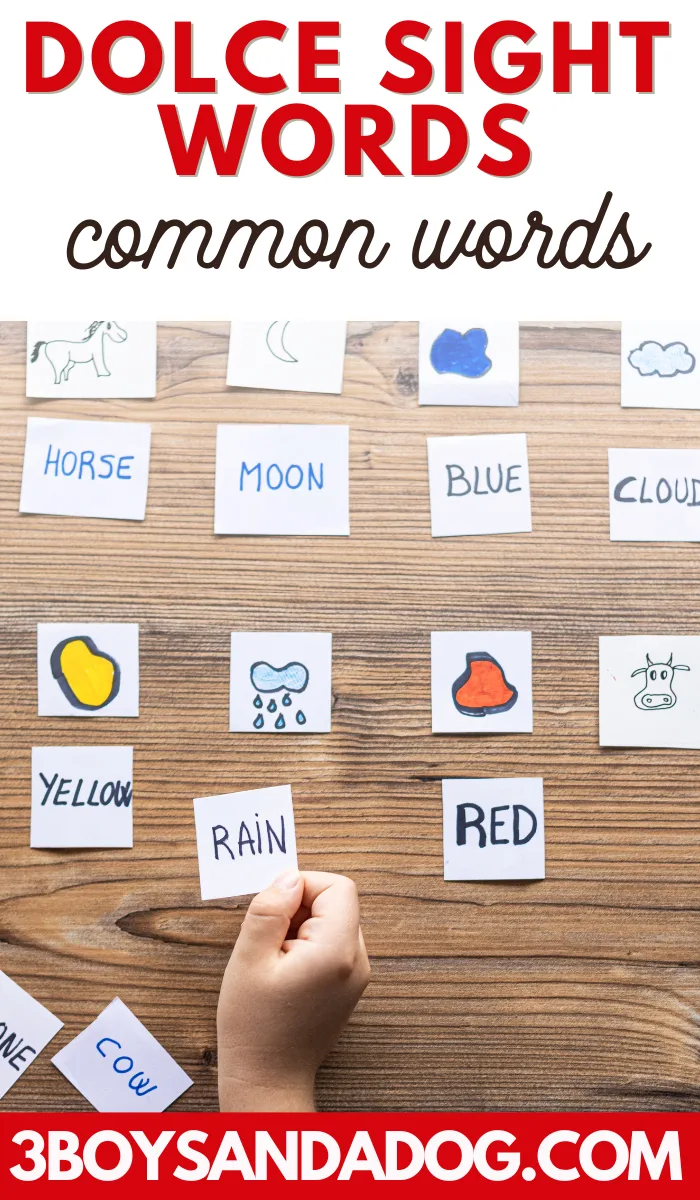
What age group is this suitable for?
The fun part about lists like this is that it can be for a wide variety of ages. First graders can use it as a way to further enhance their reading and writing skills, while younger kids can use it to start to learn how to read.
A lot of these words are found in a typical children’s book so it’s a great resource for young kids to have so that they can become visual learners and associate the words with the words on the pages of their favorite books.
This list has some of the most common words that 1st – 3rd grade children might see and read, so that would be a good age group to start working on this list.

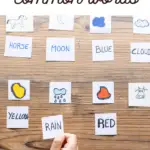
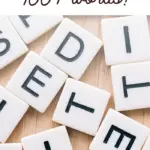

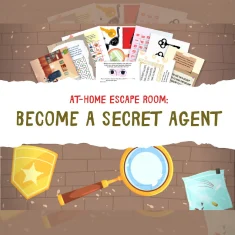














Paulina oswald
Tuesday 13th of August 2019
I Thank you for your hard work with the flash cards. Do you have the next 100 words? I have been teaching special needs adults how to read and it's working amazing.
Kelli Miller
Monday 21st of October 2019
THey are all here, but I don't have them all linked - search in the search bar for "dolch". They are sorted by week :-)
Crystal@WhatTreasuresAwait
Tuesday 28th of June 2016
What a fun way for the kids to learn! Thanks for sharing at Welcome Home Wednesdays!
Glenda Cates
Wednesday 22nd of June 2016
I am so glad I found this post as my son who is 8 still struggles with some of the spelling words he should know. So I will be printing these out to your in our Home school. So I can make sure Charlie will know them before 3rd grade begins.
Christina
Sunday 14th of September 2014
Awesome! Thanks
Kelli Miller
Sunday 21st of September 2014
So glad you found it useful! AFter doing all these words, my youngest son is only struggling with 10 of them. So, we are going to focus one week on just those ten words. :-)
Terry Hill
Monday 17th of March 2014
Thank you!